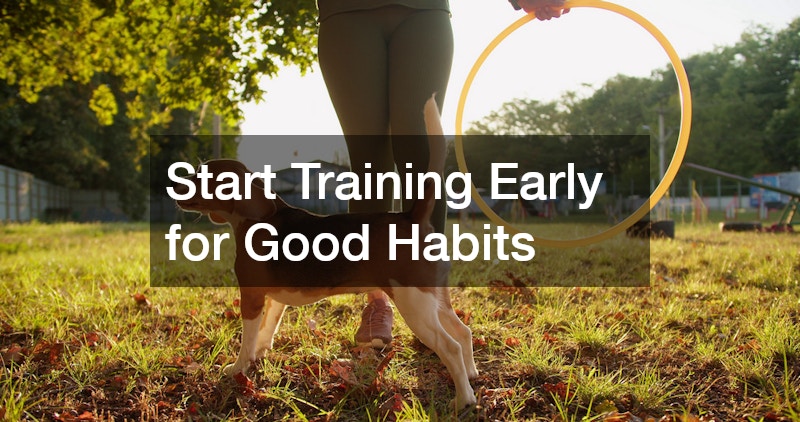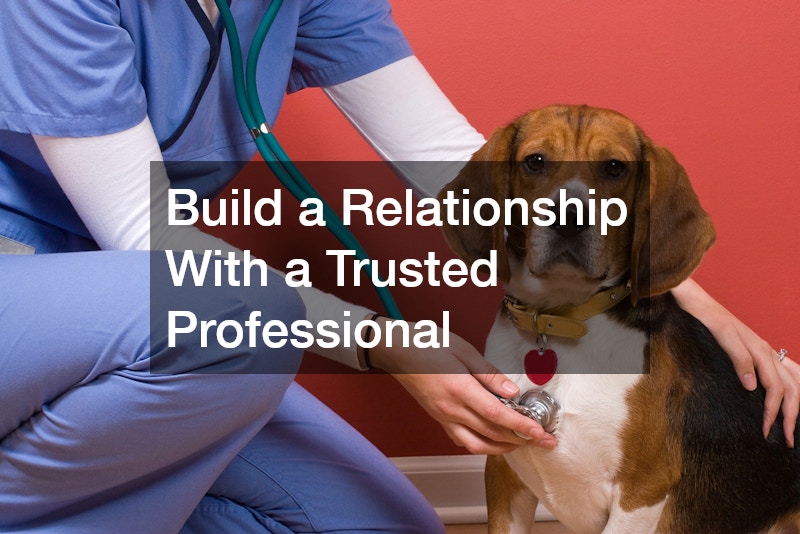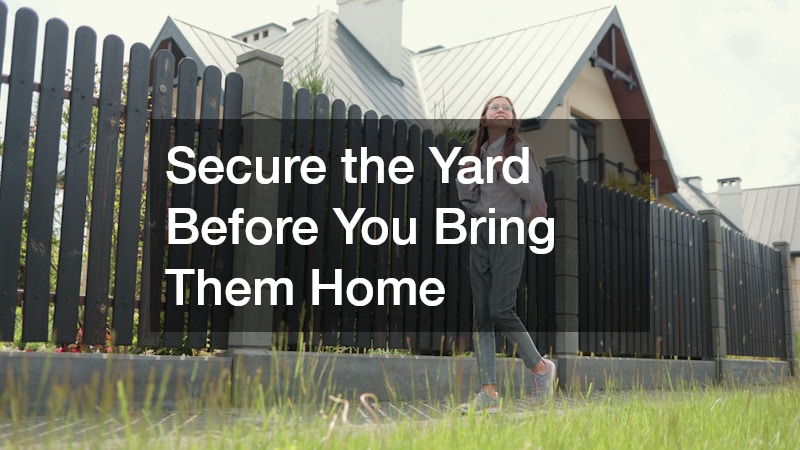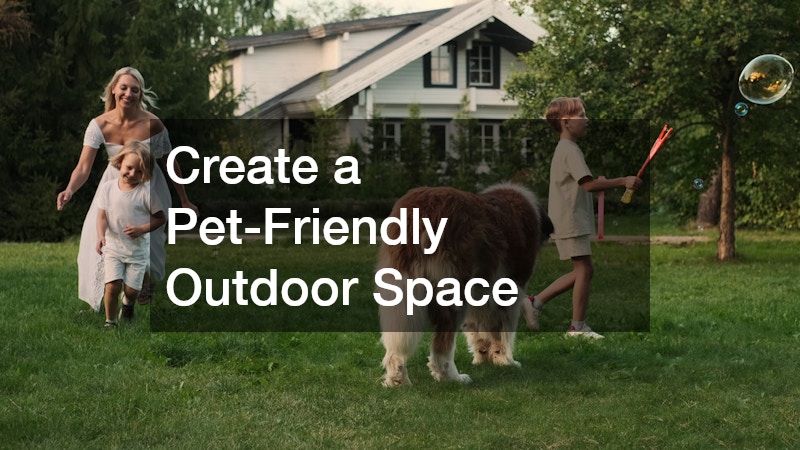Bringing home a new pet is an exciting milestone, filled with the promise of love, loyalty, and unforgettable moments. For first-time owners, however, this transition can also feel overwhelming. Between researching supplies, learning about dietary needs, and trying to understand behavioral quirks, it’s easy to feel unsure where to begin. Setting a strong foundation from the start is crucial not only for your pet’s health and happiness but also for your own peace of mind.
Many first-time owners underestimate how much structure and preparation pets need to thrive. Whether you’re welcoming a playful puppy, a curious kitten, or a rescued adult animal, each pet deserves a home environment that supports both their emotional and physical needs. That means planning ahead and staying consistent with everything from house rules to feeding schedules.
Preparation goes beyond just buying food and toys. It’s about creating a safe, secure, and enriched space where your pet feels like a valued member of the family. Many first-time pet owners focus only on the basics, but the real key to long-term success lies in anticipating challenges before they arise. This means thinking about daily routines, travel accommodations, outdoor safety, and long-term wellness.
Creating a happy pet begins with a checklist that covers every aspect of their new life. Training, healthcare, cleanliness, and yard safety all contribute to a harmonious home. Establishing strong habits from day one will help reduce stress and allow both you and your pet to settle into a rhythm that promotes trust and affection. Even simple actions, like choosing the right fencing or arranging for occasional pet sitting, show that you’re thinking ahead and prioritizing your pet’s well-being.
First-time pet ownership is a rewarding journey, but like any meaningful relationship, it requires time, effort, and attention to detail. This guide is designed to walk you through each major component of pet care, so you feel prepared, confident, and excited for what’s ahead. With the right approach, you’ll build the happy pet environment your new companion needs to thrive.
Start Training Early for Good Habits

One of the first steps in raising a happy pet is laying the groundwork for good behavior. The earlier you introduce training, the easier it becomes to establish routines and expectations. Positive reinforcement, consistency, and patience are key to helping pets learn how to behave in a human household.
Professional canine trainers can be a valuable resource, especially for dogs with high energy or behavioral challenges. These trainers not only teach basic commands like “sit” and “stay,” but also offer support with socialization, leash walking, and impulse control. Group classes provide exposure to other animals and people, which helps pets develop confidence and reduce anxiety.
Starting early allows your pet to understand what is expected of them and reduces the chances of unwanted habits forming. This is particularly important for puppies, who are in a critical developmental window. Enlisting the help of experienced trainers ensures your pet learns in a safe, controlled, and positive environment.
Keep Health on Track With Routine Protection
A cornerstone of pet health is preventive care. Staying up-to-date with vaccinations helps protect your animal from serious diseases and ensures they stay healthy as they grow. For the happy pet, a healthy immune system and regular wellness checks are non-negotiable.
Pet vaccines are typically administered on a schedule beginning when your pet is young. Core vaccinations protect against conditions like rabies, distemper, and parvovirus, while non-core vaccines may be recommended based on lifestyle or geographic location. Your veterinarian will provide guidance based on your pet’s specific needs.
Vaccination visits are also an opportunity to check on your pet’s overall health. From monitoring growth and weight to examining skin, teeth, and joints, these appointments are a proactive way to detect problems early. Preventing illness is always easier—and more affordable—than treating it after the fact.
Plan Ahead for When You Travel
Even the most dedicated pet owners need time away, whether for work, family events, or vacations. That’s why making arrangements in advance is essential. Ensuring the happy pet remains cared for and comfortable while you’re gone requires thoughtful planning.
A boarding kennel is often the best choice for short- or long-term absences. Look for one that is clean, secure, and staffed by professionals who genuinely care about animals. Tour the facility in advance and ask about feeding routines, playtime, and medical protocols in case of emergency.
Some pets may prefer in-home care or staying with a trusted friend, but a reputable boarding kennel provides consistent supervision, structured activity, and social interaction. Getting your pet accustomed to the facility with short stays before a longer trip can ease anxiety and improve the overall experience.
Build a Relationship With a Trusted Professional

Having a dependable veterinarian is crucial for every stage of your pet’s life. Regular checkups, prompt illness diagnosis, and emergency care all contribute to the happy pet’s long-term well-being. Establishing this relationship early provides peace of mind and ensures continuity of care.
Veterinarians do more than treat sick animals. They are your go-to experts for nutrition advice, behavioral insights, and developmental milestones. They’ll guide you through important decisions such as spaying or neutering, dental care, and managing chronic conditions if they arise.
When choosing a vet, consider proximity, office hours, and the availability of after-hours care. Building trust with your vet helps your pet feel more comfortable during visits and makes it easier to seek help when something doesn’t seem right.
Know Where to Find Help When You Need It
First-time pet ownership comes with questions and sometimes, unexpected challenges. Whether you’re facing a behavior issue or wondering about a new food, knowing where to look for reliable information is important for maintaining a happy pet lifestyle.
Pet care resources include books, online articles, forums, and local community groups. Your veterinarian is always the best starting point, but it’s helpful to have a go-to list of sources you trust. Look for content backed by veterinary professionals or reputable organizations.
Emergency situations—like a sudden injury or ingestion of a harmful substance—require fast action. Keep your local animal emergency clinic’s number saved in your phone, and be aware of 24-hour hotlines. Preparation ensures you’re never caught off guard.
Maintain a Clean and Safe Indoor Environment
A clean home is more than a matter of aesthetics—it’s essential for your pet’s health. Allergens, fur buildup, and bacteria can accumulate quickly, especially with young or shedding animals. Prioritizing cleanliness supports the happy pet and keeps your home inviting for both animals and humans.
Carpet cleaning companies offer deep-cleaning services that help remove pet stains, dander, and lingering odors. Even if you vacuum regularly, professional treatments reach deep layers of carpet that typical household machines can’t.
It’s a good idea to schedule cleanings a few times a year, especially if your pet is still house-training or has had accidents. This reduces the spread of bacteria and helps maintain a fresh, sanitary environment for your family and your furry friend.
Secure the Yard Before You Bring Them Home

Outdoor safety is just as important as indoor comfort. If your home has a yard, securing it properly ensures your pet can enjoy the outdoors safely. Preventing escapes and keeping out potential threats creates the happy pet space your animal deserves. A well-prepared yard also minimizes stress for owners by removing worry over potential dangers. Proper barriers, clear zones, and shaded areas all work together to make outdoor time both enriching and secure for your furry companion.
Hiring a fence company to install or upgrade fencing is one of the most effective ways to secure your yard. Depending on your pet’s size and behavior, you may need a taller fence or one that extends underground to prevent digging. Fencing also helps define boundaries, reducing the chance of conflict with neighboring pets or wildlife. Whether you choose wood, vinyl, or chain-link, it’s essential to select durable materials that suit both your pet’s needs and your property’s layout.
Check for any gaps or loose panels regularly, and make sure gates latch securely. A safe yard allows for supervised play, exercise, and exploration without putting your pet at risk from nearby roads or wandering off. Consistent inspections help catch wear and tear before it becomes a real hazard. Even weather damage or routine aging of the materials can create vulnerabilities, so staying on top of maintenance keeps your outdoor space reliably secure for daily use.
Prevent Unwanted Visitors from Harming Your Pet
Even a well-secured yard can be compromised by pests and insects. Fleas, ticks, ants, and rodents can pose serious health risks to pets. Taking proactive steps to eliminate these nuisances protects the happy pet lifestyle you’re building. In addition to physical discomfort, many pests transmit disease or trigger allergic reactions. Early detection combined with preventive measures can drastically reduce health issues and ensure your pet’s time outside remains comfortable and safe throughout the year.
A professional pest control service can treat your yard and home without exposing your animals to harmful chemicals. Choose companies that offer pet-safe solutions and are experienced with homes that have animals on the property. Ask about environmentally friendly treatment plans that are specially formulated for pet-heavy households. These services often offer seasonal inspections and application cycles tailored to your specific location and concerns, reducing long-term costs and health risks for everyone involved.
Prevention is key—regular treatments can reduce the chance of infestations before they start. Keep in mind that some pests are seasonal, while others can invade year-round. Working with experts helps you stay ahead of potential problems. Integrated pest management combines physical barriers, habitat reduction, and low-toxicity treatments for comprehensive protection. Maintaining good sanitation, trimming grass, and sealing potential entry points also go a long way in defending your home and keeping your pet comfortable.
Remove Hazards Before Outdoor Play Begins
Yard safety isn’t only about fences and pests. Overgrown trees, broken limbs, and unstable structures can be dangerous, especially for curious or active pets. Removing these hazards is another step toward supporting the happy pet lifestyle. Pets love to explore, climb, and chew—so eliminating potential threats prevents injuries and accidents before they happen. A well-maintained yard adds not only to your pet’s safety but also enhances the overall beauty and usability of your property.
Tree removal services can assess your yard for unsafe limbs or damaged trees that could fall during a storm. They also ensure branches aren’t hanging low enough for pets to climb or chew on, which could cause injury. Overgrown trees can also attract birds or pests that disrupt your pet’s behavior or bring disease. A clean, managed tree line improves visibility in your yard and lets you better supervise your pet while they play outside.
In addition to tree work, make sure your yard is free of sharp objects, holes, or chemicals that could pose a risk. Create a designated play area that is both stimulating and secure, encouraging your pet to explore safely. Consider adding pet-safe mulch or grass, agility equipment, and shaded lounging spots. These small enhancements turn your yard into a safe haven that promotes physical activity and mental engagement, all essential elements in creating a happy pet environment.
Create a Pet-Friendly Outdoor Space

Once the yard is safe, the final step is turning it into a pet-friendly zone where your animal can enjoy exercise and relaxation. For the happy pet, having a fun, accessible outdoor environment supports both mental and physical health.
A professional landscaper can help design a yard that meets your pet’s needs while also enhancing your property’s appeal. Consider pet-safe plants, shaded rest areas, and open space for running or fetching. Paths and raised beds can add visual interest and prevent trampling.
Don’t forget to include water access and safe zones where your pet can cool down. The goal is to create a space that promotes stimulation without risk, because a happy pet is an active, engaged, and secure pet.
Owning a pet for the first time is one of life’s most rewarding experiences. As exciting as it is, it also brings a wide range of responsibilities. Being prepared from day one makes all the difference in building a strong bond with your new companion and ensuring their needs are consistently met. From health and safety to comfort and behavior, every decision you make plays a role in shaping the happy pet experience.
There’s no perfect formula for success, but there are tried-and-true steps that guide you toward a more fulfilling journey. Training early helps prevent behavior issues before they start, while routine veterinary care keeps your pet in top shape. Clean spaces and secure yards give pets the freedom to thrive, and reliable resources help you navigate challenges along the way.
Thoughtful planning doesn’t just benefit your pet—it also gives you peace of mind. When you know your home is ready, your schedule is set, and your emergency plans are in place, you’re free to enjoy the best parts of pet ownership. That includes playing fetch in the yard, snuggling on the couch, or simply watching your pet nap in the sun.
Every pet is different, and your relationship with them will evolve over time. But by investing in the right resources and sticking to this checklist, you’ll be well on your way to nurturing the happy pet lifestyle. Whether it’s their first vet visit or their first time bounding through the backyard, each moment becomes more meaningful when you know your pet is healthy, safe, and truly loved.
Ultimately, a happy pet is not just about having a well-behaved animal—it’s about creating an environment where they feel at home. And when your pet is content, confident, and cared for, you’ll find that you’ve built something truly special together.


